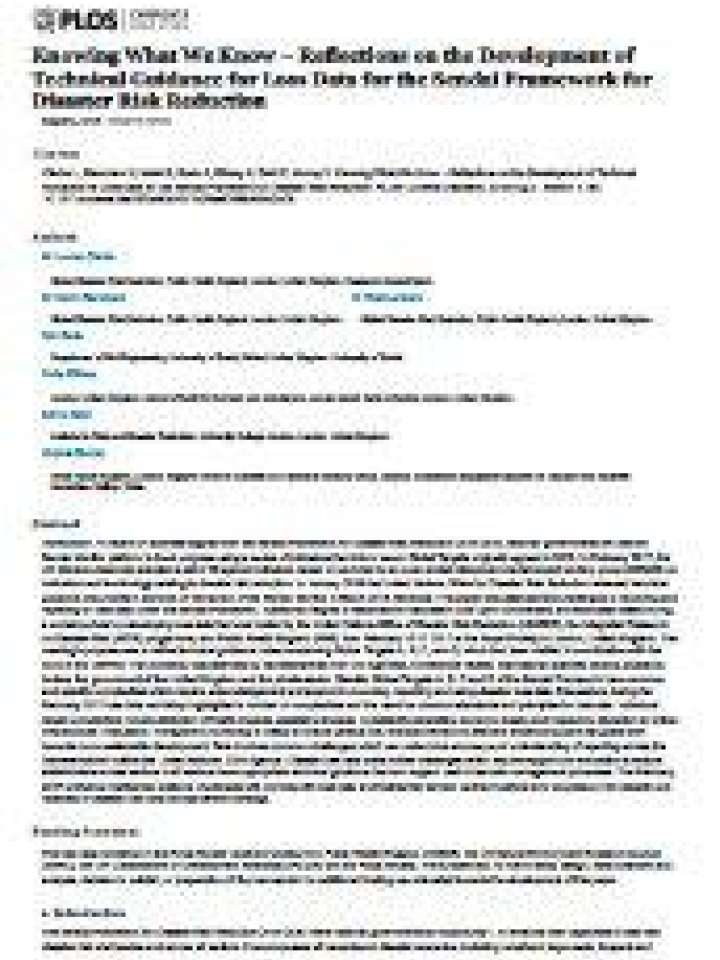Knowing what we know: Reflections on the development of technical guidance for loss data for the Sendai Framework for Disaster Risk Reduction
To report on activities aligned with the Sendai Framework for Disaster Risk Reduction 2015-2030, national governments will use the Sendai Monitor platform to track progress using a series of indicators that inform seven Global Targets originally agreed in 2015. In February 2017, the UN General Assembly adopted a set of 38 agreed indicators based on work led by an open-ended intergovernmental expert working group (OIEWG) on indicators and terminology relating to disaster risk reduction. In January 2018 the United Nations Office for Disaster Risk Reduction released technical guidance documents in advance of the launch of the Sendai Monitor in March 2018.
This paper discusses several challenges to recording and reporting on loss data under the Sendai Framework. Additional insights to elaborate on discussion build upon commentary and examples raised during a workshop held on developing loss data that was hosted by the United Nations Office of Disaster Risk Reduction (UNISDR), the Integrated Research on Disaster Risk (IRDR) programme, and Public Health England (PHE) from February 15-17 2017 at the Royal Society in London, United Kingdom. The meeting’s purpose was to refine technical guidance notes concerning Global Targets A, B, C, and D, which had been drafted in coordination with the work of the OIEWG. The workshop was attended by representatives from UN Agencies, UN Member States, international scientific bodies, academic bodies, the government of the United Kingdom and the private sector.
Global Targets A, B, C and D of the Sendai Framework have common and specific complexities which require acknowledgement and support in recording, reporting and using disaster loss data. Discussions during the February 2017 loss data workshop highlighted a number of complexities and the need for common standards and principles for loss data. Individual target complexities include attribution of health impacts, assessing impacts, consistently calculating economic losses and measuring disruption to critical infrastructure. Discussion: Transparent monitoring is critical to ensure political will, financial efforts and effective evidence support the global shift towards more sustainable development. Data involves common challenges which can undermine accuracy and understanding of reporting across the frameworks that outline the United Nations’ 2030 Agenda. Disaster loss data adds further challenges which require support and innovation to ensure stakeholders across sectors in all sectors have appropriate technical guidance that can support useful loss data management processes. The February 2017 workshop highlighted systemic challenges with working with loss data and highlighted several pertinent pathways to progress on the breadth and reliability of disaster loss data across different settings.
Explore further
